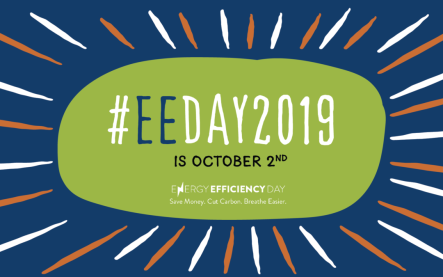Are you ready for new ESG regulatory requirements and increasing investor demands? OSCRE Innovation Forum’s recent webinar, Constructing an ESG Framework for the Future, provided expert insight into this critical initiative. Moderated by Lisa Stanley, CEO at OSCRE, the panelists were Dan Winters, Head of Americas at GRESB, The Global ESG Benchmark, Naseem Wenzel, Strategy + Innovation Lead Partner at Cohn Reznick and Daniel Egan, Senior Vice President, Energy and Sustainability at Vornado Realty Trust. Read on for some important takeaways. Top ESG challenges A polling question during the webinar asked participants to identify the top challenge they face for ESG initiatives. 42% cited inconsistent data across platforms, tied with 42% that stated building skills to implement ESG initiatives are the top challenges. In its January e-newsletter, OSCRE responded to the polling results, “Inconsistent data across platforms is not a new phenomenon for organizations…While investment funds report their activities including zero-carbon targets and other environmental impact initiatives through their Annual Reports and GRESB benchmark reports among others, the information that’s reported is gathered at the property level. This need for information confirms common ground — the need for standardized information for property owners, occupiers and investors that inform decisions and provide insight for risk assessment.” Clearly, there’s a need for not only impeccable data from a centralized location (a single source of truth), but also the ability to automatically extract and properly analyze it for meaningful application. This applies to ESG efforts as for all other operational processes. Good corporate governance Organizations must assess where they are today — including the level of responsible corporate leadership, to create a roadmap for where they want to go. Having an “ESG culture” across your business is key, meaning ESG is part of everyone’s job, as is...
New Energy Regulations
Prep Help from Yardi
Yardi recently hosted a series of webinars for property owners in the U.S. and Canada facing the prospect of complying with a raft of energy, water and waste benchmarking requirements. A new statewide ordinance in California, measures in a host of municipalities and the Energy & Water Reporting and Benchmarking Regulations (EWRB) in Ontario, Canada, require measurement and public disclosure of whole building energy and/or water efficiency. All told, 49 mandatory policies to leverage ENERY STAR® plus a like number of voluntary policies requiring commercial and multifamily property owners to gather, assimilate and submit data will be on the books next year. Energy experts Randy Moss, Kimmy Seago, Ashley Nelson, Carson Spraker and Ethan Arbiser used the webinar series to illustrate the process and benefits of ENERGY STAR, the industry benchmarking standard that shows how efficiently a building performs compared to other similar buildings. Challenges often associated with benchmarking include managing multiple vendors and data request processes, compiling multiple street addresses into a whole building, obtaining owner and tenant authorizations, ensuring data quality, and properly setting up data and reporting through ENERGY STAR Portfolio Manager®. As an ENERGY STAR partner that has benchmarked 320 million square feet within Portfolio Manager, Yardi has energy management software and certified experts that make collecting, assimilating and reporting required information much easier for building owners. Benchmarking steps include setting up properties in Portfolio Manager, requesting whole building utility data from providers, and verifying and submitting the data. The Yardi team also tracks regulation updates and properties’ compliance status. The webinar presenters pointed out that property managers can use information loaded into ENERGY STAR for purposes beyond compliance. These include earning certifications that exempt properties from audits and recommissioning and gaining access to low-cost green financing. Benchmarking can also help attract investors, many of whom factor ENERGY STAR scores into their investment decisions. Data gathered from benchmarking also helps property managers plan and evaluate future energy conservation measures and compete in internal and external energy-saving competitions. Learn what’s ahead in American and Canadian energy regulations and learn how Yardi, which actively manages ENERGY STAR compliance for more than 2,000 commercial and multifamily properties in many jurisdictions, can help you get...
Make Energy Efficiency Fun...
Tips from ENERGY STAR
Commercial building owners and managers, especially those equipped with the Yardi Pulse Suite, can lead the way in optimizing energy consumption. But with tenants accounting for as much as 80% of the energy used in office buildings, energy efficiency requires nothing less than a full team effort. ENERGY STAR® suggests making the quest for energy efficiency collaborative, stimulating, rewarding and—last but certainly not least—fun for tenants. Advice in the program’s “8 Great Strategies to Engage Tenants on Energy Efficiency” guidebook from 2016 includes: Be transparent and open with timely information. That includes sharing energy efficiency goals, building energy use data and ENERGY STAR scores. Vornado Realty Trust, for example, launched an energy information portal that enables submetered tenants to access their energy usage profile and data. JLL publishes an annual building environmental report while Wells Real Estate displays ENERGY STAR scorecards that report progress toward sustainability goals. Leverage the ENERGY STAR brand, which the U.S. Environmental Protection Agency says is recognized by 80% of Americans. The program’s resources include tip sheets, interactive tools and other guidance for inspiring tenants to provide energy consumption information. Beacon Capital Partners Inc. and Cushman & Wakefield are among the property managers that apply ENERGY STAR branding to its posters and other materials. ENERGY STAR also offers opportunities for positive visibility through certifications, competitions and other recognition. Educate tenants on their energy use and impacts and help them identify opportunities for improvement. Examples among industry leaders include CBRE, which sends letters rich with energy-saving tips; Beacon Capital, which hosts a plug load educational program; and Liberty Property Trust, which created a green guide web portal. Meanwhile, Cushman & Wakefield offers tenants a green office tool kit, Bentall Kennedy distributes a sustainable tenant improvement manual and JLL sponsors a “go...
Energy’s Future
Looking to 2050
What’s the future of worldwide energy consumption? A recently published study of international energy markets through 2050 offers some clues. The U.S. Energy Information Administration (EIA), the U.S. Department of Energy’s statistical and analytical agency, conducts annual long-term assessments of world energy markets. The EIA characterizes its compilation of current trends and relationships among supply, demand and prices in the future as “a reasonable baseline case to compare with cases that include alternative assumptions about economic drivers, policy changes or other determinants of the energy system.” Here are some projections from International Energy Outlook 2019: Global consumption World energy consumption will grow nearly 50% between 2018 and 2050, with most of this expansion coming from regions where strong economic performance is driving energy consumption. Asia represents the largest and fastest-growing region for energy consumption. The shift of manufacturing centers to Africa and South Asia, especially India, will spur energy consumption. The industrial sector, including mining, manufacturing, agriculture and construction, will account for more than 50% of global end-use energy consumption between 2018 and 2050. Buildings’ share of the world’s delivered energy consumption will increase from about 20% in 2018 to 22% in 2050. Renewable energy Renewables (including hydropower) will be the fastest-growing source of electricity generation until 2050, rising by an average of 3.6% per year. Wind and solar will account for over 70% of total renewables generation by 2050. Electricity generation from wind and solar sources will represent renewable energy sources’ biggest increases until 2050, reaching 6.7 trillion and 8.3 trillion kilowatt-hours (kWh), respectively, as these technologies become more cost competitive and receive support from government policies in many countries. Worldwide renewable energy consumption will increase 3% per year to 2050. Nuclear consumption will increase 1% per year. Hydropower’s share of renewables generation will fall from 62% in 2018 to 28% in 2050 because resource availability in Organization of Economic Cooperation and Development (OECD) countries and widespread environmental concerns limit the number of new mid- and large-scale projects. (OECD is a 36-member group of countries with market economies.) Electricity Electricity generation will increase 79% until 2050, with consumption increasing in all end-use sectors. On average, consumption of electricity in more-developed OECD economies and developing non-OECD economies will grow 1% annually until 2050, while non-OECD consumption will grow 2.3% annually. Electricity will remain the main source of marketed energy consumption in the residential sector. Its use will grow by 2.5% per year globally as rising populations and standards of living in non-OECD countries increase demand for appliances and personal equipment. The transportation sector will consume more electricity as more plug-in electric vehicles enter the fleet and as electricity use for rail expands. Petroleum and other liquid fuels will remain the principal transportation fuel, however. Petroleum and liquids As a share of primary energy consumption, petroleum and other liquids will decline from 32% in 2018 to 27% in 2050. On an absolute basis, liquids consumption will increase in the industrial, commercial and transportation sectors and decline in the residential and electric power sectors. Residential natural gas consumption will grow by 0.7% per year, influenced by increasing use of the fuel for heating. Read the full International Energy Outlook 2019 report. Learn how Yardi technology contributes to energy conservation and sustainability...
Energy Efficiency Day...
It’s Happening Now
If encouragement to “save money; cut carbon; breathe easier” seems more prominent than usual where you live and work, it’s because today is Energy Efficiency Day, and that’s the key message the event’s organizers are promoting. A nationwide alliance of energy efficiency advocacy groups sponsors Energy Efficiency Day to share “tips, tools and stories that promote the multiple benefits of energy efficiency, from lower costs to healthier homes,” as stated in the event’s website. About 450 local governments, universities, organizations, corporations and utilities are hosting an array of activities including expos, energy-saving device installations, free energy assessments and symposia with thought leaders. Organizers of Energy Efficiency Day, an annual occurrence since 2016, encourage people to stage their own events, such as a “treasure hunt” check of home appliance, lighting and insulation efficiency, and to share their experiences from the day (#EEDay2019). Technologies that lower energy bills and make properties more comfortable are part of Energy Efficiency Day’s focus—and have long been a staple of Yardi’s business. The Yardi Pulse Suite, an integrated set of software solutions, supports sustainability efforts by maximizing efficiency across all property types. “October 2 is Energy Efficiency Day. But efficiency is year-round,” says the event’s website, which pretty well summarizes Yardi’s approach as well. Every month last year, for example, the company benchmarked more than 1,700 buildings across 47 client portfolios in 27 compliance jurisdictions in ENERGY STAR® Portfolio Manager®. A grant to the BOMA Water and Waste Challenge helped property owners and managers improve their water and waste management practices. Ongoing leadership, innovation and commitment to environmental protection earned Yardi designation as an ENERGY STAR Partner of the Year. The company joined GRESB’s Global Partner program this year as a sustainability consultant and solution provider. Yardi promotes energy management...
Reducing Energy Consumption
Good for the bottom line and the planet
Utility expenses are one of the biggest controllable expenses in commercial buildings. Yet an average commercial building wastes 30% of its energy consumption due to inefficiencies and lack of proper management. This highlights an opportunity to take a more proactive approach on measuring energy consumption and implementing solutions to improve how a commercial building operates. A reduction in energy consumption is good for the bottom line and is great for the environment. It is estimated that a reduction of between 25% and 30% in real estate energy emissions could in turn help the US and other nations hit the Paris Agreement targets within the next 10 years, which would be a remarkable achievement. Yardi has developed a comprehensive energy management platform for commercial and build-to-rent real estate portfolios called Yardi Pulse. We believe having a better understanding of utility and energy consumption is an important ‑ first step in developing strategies to reduce consumption and improve efficiencies in how a building operates. Our energy solutions have been available in the US, for a number of years and are currently being deployed to international markets, including the UK. Yardi solutions have traditionally been focused on servicing the back office of real estate investors, owners and operators to manage their property portfolios using Voyager – our enterprise resource planning platform. This focus on real estate has allowed us to gain a deep understanding and data set of how buildings are managed, the expenses associated with utilities and the costs associated with running the mechanical and plant operations in a building. Yardi Pulse has been created as a software-driven energy strategy that is comprehensive in terms of functionality, easy to use and provides a short payback period for clients. Yardi Pulse has three core functional modules. Utility Expense Management is crucial to understanding and documenting energy consumption in a building and across a portfolio. By leveraging machine learning to provide automated validations to ensure that utility expenses are correct, late fees, bill errors and over payments can be reduced. Detailed consumption data in turn helps provide valuable portfolio benchmarking. This granular consumption data in turn becomes the starting point to build an effective energy strategy. Energy Intelligence is the second building block, which is fuelled by real-time data being collected through Internet of Things (IoT) real-time metering devices installed in the buildings. This enables visibility to compare usage, savings and spikes between time periods across an entire portfolio to highlight outliers. This data allows clients to make incremental but powerful changes. Energy efficiency Energy Automation is the third building block, designed to maximize building performance with energy automation technology that prevents HVAC system problems by proactively detecting faults and providing alerts. This also allows clients to automate their heating and cooling to optimize tenant comfort and minimize wasted HVAC costs. Tackling the energy efficiency of a building can be daunting, as it is often difficult to understand where to start or how to calculate the benefit of an investment. We have found that an incremental strategy by focusing on first gaining visibility into consumption and demand can reduce costs by 2% to 5%. Over time, building owners and operators can identify their highest cost/highest ROI assets as candidates for energy automation. This then leads to additional cost savings exceeding 10% to 15%. We expect cost savings to increase, as we further develop artificial intelligence and machine learning engines to analyse larger data sets on consumption as well as other data points that will be collected with the deployment of additional IoT sensors in buildings. The market has also seen an increase in demand from investors and tenants for more energy efficient buildings. From an investor perspective, an energy-efficient building is one of their investment criteria. Not only does an energy-efficient building increase the appeal of the investor, but it also tracks higher-value tenants that rank sustainability and energy efficiency in their decision...
Sunny Outlook
Space-Based Power
Solar power is a burgeoning alternative energy source that accounts for 1.6% of total U.S. electricity generation and encompasses enough installed capacity to power 12.3 million homes. It’s the second-fastest source of new generation on the U.S. power grid, but it’s not flawless. Arrays that capture solar energy don’t work at night or when obscured by cloud cover, atmosphere or seasonality. The United Nations estimates the global population will be 9.6 billion by 2050, so the rush is on to find new ways to generate large quantities of clean energy. For decades, scientists have explored putting solar arrays where night never falls and clouds don’t form and power transmission need not be interrupted by fickle weather or unfavorable orbital tilt. Specifically, in geostationary or low-Earth orbit, where satellites could capture solar energy, convert it into a microwave or a laser and beam it to Earth. Ground-based receivers would then convert the energy into useable electricity and add it to the electric grid. “If solar power is going to be the principal so-called ‘dispatchable’ baseload source of power that replaces today’s fossil-fuel-powered electric-generating stations, inherently you have to have the generating source be available all the time,” environmental scientist Dr. Deanna Conners wrote in 2018. Efforts to put space-based solar power generation into production have been hindered by cost and technology impediments. But recent developments are bringing the concept closer to reality. In 2018, scientists at the California Institute of Technology announced that they created a prototype lightweight tile, the building block of solar arrays capable of harnessing and transmitting solar energy from space. Earlier this year, China announced plans to place the first solar power station in geostationary orbit by 2050. Other countries in Asia and Europe are working on their own projects. A...
Nearing Zero
Energy Efficiency Webinar
The processes and technology needed to start moving to “net zero” buildings—those that produce enough renewable energy to meet their annual energy consumption requirements—are available today. How to make them widely understood, accepted and implemented was the focus of a recent webinar featuring Akshai Rao, Yardi vice president of procure to pay and energy, and other industry experts. ENERGY STAR® estimates that the average commercial building wastes 30% of its energy consumption. Real estate is the fourth largest generator of greenhouse gas emissions; if that industry alone cut its emissions by 30%, the U.S. could hit the Paris Agreement targets, Rao told the webinar audience. This means there are significant monetary as well as societal incentives for achieving net zero. “Because energy is a building’s second largest controllable cost, it can really eat into investor returns. Having a cohesive energy strategy is one of few things the real estate industry can do from an operations perspective that increases portfolio value,” Rao said. Any hope of achieving a net zero building or portfolio, he said, starts with understanding a building’s load factors and prioritizing which buildings to invest in, which is based on benchmarking the portfolio against the industry with ENERGY STAR. ”There’s so much cost and consumption data to be gained just from utility bills. Rather than just approving and paying them, you can achieve portfolio-wide insights and property cost/consumption trends that help identify capital investment that can reduce consumption,” Rao said. Properties can couple this data with real-time metering to visualize the demand profile of a building, which can highlight tactical actions for reducing spend. Once you have data on your portfolio, the next step is to identify properties to invest in for the highest energy savings return. Several solutions on the market...
Retail Rewards
Macerich + Pulse
The sustainability framework that leading retail property owner, operator and developer Macerich operates under calls for eliminating energy waste and nearly eliminating emissions, water waste and landfill impact. Evidence of Macerich’s success in translating these “Innovating to Zero” principles into best practices includes a No. 1 GRESB Benchmark ranking for four years running among North American retailers and a Top 30 onsite generation designation in the U.S. Environmental Protection Agency’s Green Power Partnership. The Santa Monica, Calif.-based S&P 500 company has generated 16 megawatts of grid relief and saved more than 300,000 KwH annually with solar panel installations and LED retrofits. It’s the only U.S. retail real estate company to earn the highest “Climate A List” ranking from CDP (formerly the Carbon Disclosure Project), the world’s most comprehensive collection of self-reported environmental data. Another accolade came in the form of a Commercial Real Estate Digital Innovation (“Digie”) Award in the Most Intelligent Building Project category that Macerich received at the Realcomm ׀ IBCon conferences in June. Macerich recently marked another notable milestone: the 10-year anniversary of a multifaceted energy management sustainability program that has reduced the company’s environmental impacts while squeezing every ounce of efficiency from its operations. The company’s plan called for using advanced energy management software to combine internet of things data with additional logic and analytics functionality. The goal was to turn disparate charts, graphs and reports into coherent, actionable intelligence for operations teams and managers across 51 million square feet of real estate in 15 U.S. states. The software central to achieving that vision, the Yardi Pulse Suite, integrated Macerich’s central energy management systems with utility billing, energy data collection and the Yardi Voyager property management and accounting system. The suite enables connection, analysis and display of building information from Macerich’s...
Energy Education
Yardi Sponsors CHESC
Yardi didn’t have to venture far recently to share sustainability expertise with an audience eager for innovative energy efficiency ideas. The company provided top-level sponsorship plus an exhibit and speaker for the California Higher Education Sustainability Conference (CHESC), a forum for research and case studies at the University of California, Santa Barbara, just a few miles from its headquarters. The four-day gathering included more than 700 California higher education professionals including sustainability coordinators, construction, energy and environmental managers, engineers and facilities directors along with faculty and students. Experts from Yardi shared how the Yardi Pulse Suite, an integrated set of software solutions, supports sustainability efforts by helping reduce energy costs and consumption across all property types. They provided examples of the company’s success in helping property owners benchmark to ENERGY STAR® and make energy efficiency investments, and shared how Yardi promotes energy efficiency and sustainability through webinars, articles in trade publications, educational sessions at industry conferences and other activities. CHESC attendees learned that Yardi further displayed its sustainability sensibilities by achieving ENERGY STAR certification for its headquarters in 2018 and installing a real-time online dashboard that shows consumption data for each building at the corporate campus. In April 2019, the company’s initiatives earned designation as an ENERGY STAR Partner of the Year. “It is our hope that tools like ours will continue to help property owners and managers be more successful with energy initiatives and comply with new mandates like the California 2030 Green Building Goals,” Lexi Beausoleil, marketing campaigns specialist for Yardi energy solutions, told the conference, adding that technology can be a powerful tool for engaging people to “see the impact of their behaviors and empower them to make better choices.” Other presenters at the conference’s opening session included Dominique Hargreaves, deputy...
Sustainable Slopes
Report on Resorts' Energy Efficiency
While offering mountains of fun in a winter wonderland, ski resorts also take sustainability seriously. Almost 200 resorts, more than 75% of the U.S. total, have endorsed “Sustainable Slopes,” the National Ski Areas Assn.’s (NSAA’s) Environmental Charter that incorporates principles for ski area planning, operations and outreach. As climate change concerns and consumers’ environmental awareness grow, NSAA and other ski resort stakeholders are devising strategies to “help ski resorts transfer the concept of sustainability from one involving a few disparate energy and efficiency projects to a comprehensive a holistic way of doing business, and one that will seriously enhance the long-term prospects of the areas that adopt them,” as described by the ski magazine Powder. The latest annual report from NSAA, a trade association for alpine resorts, summarizes progress in water conservation, energy efficiency, renewable energy, waste reduction and recycling made by more than 300 ski areas that responded to a survey. One destination highlighted in the NSAA annual report, Boreal Mountain Resort & Soda Springs in California, has pledged to reduce its 2011 emissions levels by 25% by 2020. Resort managers retired less efficient vehicles, retrofitted night lighting infrastructure and installed solar panels that will generate 325,000 KwH annually. Another resort, Montana’s Bridger Bowl, offers free electric bus service on weekends as an alternative to single-occupant vehicles. And Copper Mountain Ski Resort in Frisco, Colo., installed electric vehicle charging stations, commingled recycling, composting and scrap steel recycling, and completed a building lighting retrofit. Opportunities for sustainability extend to a ski resort’s sine qua non: snow. An NSAA fact sheet notes that while snowmaking isn’t considered a consumptive act—most of the water diverted from streams for snowmaking returns to the watershed—opportunities abound to execute the process more efficiently: employing efficient snow-guns to increase the...
CA Benchmarking
Yardi Smart Energy Suite is Ready
A California energy benchmarking law going into effect next June requires multifamily property owners to complete a potentially daunting array of information gathering and reporting requirements. Yardi’s energy management software and experts stand ready to make the process easy and painless. Under the mandate, known as AB 802, owners of multifamily buildings with more than 17 units, or gross floor area of 50,000 square feet, must report information on energy use from all energy meters using ENERGY STAR® Portfolio Manager®. Reports to the California Energy Commission for 2018 are due to the California Energy Commission on June 1, 2019, and annually thereafter. Similar requirements for commercial buildings went to effect in June 2018. Actions the commission recommends to meet the June 1 deadline begin by Feb. 1, 2019. Each building’s energy efficiency will be disclosed on a yet-to-be-established state website. “Publicly disclosing the performance of buildings will allow building owners and tenants to make better informed purchasing and leasing decisions, and the general public to better understand the buildings in which they live and work,” according to the California Energy Commission. Yardi is an ENERGY STAR Partner and is helping California users of the Yardi Smart Energy Suite get ready for AB 802. All owners of more than 330 California properties that rely on Yardi for ENERGY STAR benchmarking have retained the company in preparing for AB 802. Yardi Utility Expense Management, an element of the Yardi Pulse Suite, centralizes utility cost and consumption data and sends it directly into ENERGY STAR Portfolio Manager. Portfolio Manager is an online tool for tracking energy and water consumption and greenhouse gas emissions. It also allows comparisons of a building’s energy performance against similar-type buildings. Elements of AB 802 compliance include setting up multiple measurement criteria for...












